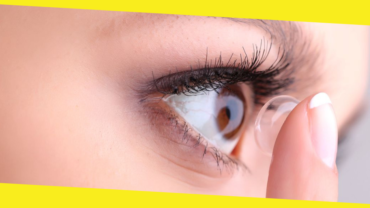More Than Therapy: Exploring Modern Addiction Treatment Options

Recovery comes in many ways. It’s not simply a matter of sitting in a group or meeting with a therapist weekly anymore. New addiction treatment considers the entire person. It integrates science, support, and everyday tools. Every person is unique, so treatment needs to be adaptable. The aim is to heal both mind and body. It’s a matter of establishing new habits and learning healthier ways to cope. Recovery is not a one-size-fits-all approach. With more options now, individuals can discover what suits them, and that makes all the difference.
Combining Old-Fashioned Support with Technology Tools
Treatment is still involved, but technology now supplements it. Programs monitor moods, provide reminders, and coach through cravings. Some provide instant access to a counselor. Others send daily intentions. These products don’t take the place of individuals—they augment them. Coupled with guidance from professionals, they maintain support beyond sessions. It’s a matter of being present and being accountable in real-time. This way, many can stay on course, even on tough days.
Working through Trauma in Safe, Systematic Manners
Addiction goes back for so many to pain. That pain must be cared for tenderly, deeply. Trauma-informed techniques now enable individuals to work through difficult memories without becoming overwhelmed. Safe havens, soothing routines, and good guides are central. Recovery is not a matter of excavating too quickly. Recovery is when trust can be established. When trauma is healed with tenderness, enduring recovery becomes more attainable. Silenced pain doesn’t have to remain underground. It may be confronted, little by little.
Incorporating Movement into the Process
Exercise is now a larger part of treatment. Body movement calms the mind. A casual walk or led stretches can reduce stress levels. A few centers have yoga or group fitness available. It’s not intensity—it’s balance. Exercise also restores energy and helps rebuild confidence. For most, exercise with others adds unity. It becomes a ritual that replaces unhealthy ones. It’s one more piece in an expanding toolbox for healing.
Involving Loved Ones at Every Stage
Families get lost, too. Bringing them along helps everyone heal as a group. Loved ones’ support groups learn how to set boundaries without shame. Family-involving sessions restore trust. Learning how to talk with care makes all the difference. When family is included in the plan, the journey isn’t so lonely. It creates more understanding. Recovery becomes a shared mission, not a single person’s battle.
Support That Doesn’t Stop at the Door
Recovery doesn’t stop once treatment is received. That’s where aftercare is useful. These are arrangements made to assist individuals once they exit a center. It could involve regular check-ins, sober living environments, or employment assistance. Some even provide mentorship by individuals in long-term recovery. Having this support keeps individuals grounded when life throws them curveballs. It reminds them that they’re not alone. Aftercare fills the gap from early recovery to long-term success.
Learning the Place of Medication in Recovery
Some individuals require something more than talk and encouragement. That is where medication assisted treatment comes in. It combines evidence-based medications with therapy to calm cravings and alleviate withdrawal symptoms. This does not take the place of work on oneself—it makes the work possible. To many, it provides a solid foundation from which to rebuild. It is utilized under close supervision and coupled with counseling. In one clinic, it decreased relapse and provided individuals with the courage to return to their communities. This alternative has opened doors for many who previously felt trapped.
Finding Holistic Healing Paths
Other approaches are becoming more popular. Activities such as acupuncture, art therapy, or exposure to nature quiet the mind. These do not “treat” addiction but help in healing. They make recovery less of a clinical process and more of an individual one. Journaling or painting provides an outlet for difficult emotions. Exposure to nature allows racing thoughts to slow. It is about more than staying away from things—it is about living again. Holistic routes remind individuals that recovery can be peaceful, beautiful, and even joyful.
Meeting People Where They Are
No two tales are identical. That’s why flexibility counts. Some require full-time assistance in a facility. Others begin with part-time services. Some like peer groups, others one-on-one treatment. What might benefit one will not benefit another. The point is providing options, not restrictions. When treatment comes to meeting people where they are—at timing, style, and pace—it makes room for genuine change. It makes recovery seem accessible, rather than forced.
Conclusion
Treatment has diversified so much from how it once was. Contemporary recovery can include therapy, tech support, movement, and more. It can be tailored to real lives and real problems. Whether it’s medication, family, or art, healing in today’s world is different—and that’s a healthy thing. Most important is doing what works, in a manner that feels safe, supportive, and sustainable. With the right tools and treatment, long-term change isn’t just possible—it’s happening every day.
Recommended For You
Tips for Caring Your Contact Lenses And Your Eyes
Most Inside
Most Inside offers high-quality recommendations and valuable updates to enhance all aspects of your life, providing premium guidance and enriching experiences.




